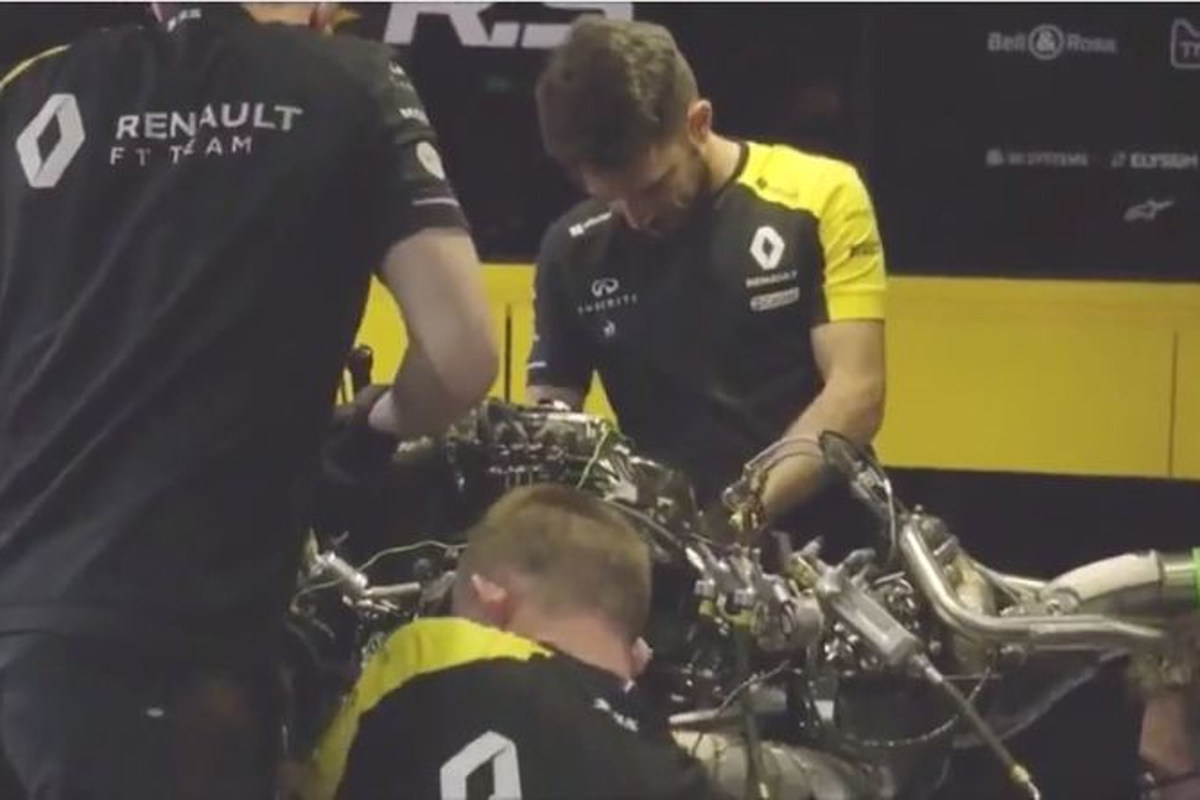Formula 1 and the FIA have outlined the specifics of the proposed new breed of engines to be introduced in 2025.
After the F1 Commission voted unanimously to freeze the current power units from next season, the direction of the sport can now be firmly assessed ahead of the all-important new regulations mid-decade.
Six key objectives were highlighted for the new system, and here GPFans Global takes an in-depth look.
Environmental sustainability
One of the major talking points of any F1 engine moving forward will be this particular topic. One of the primary reasons behind the switch to the current V6 turbo-hybrid power units was the need for more efficient, environmentally-friendly engines.
So how does the sport improve upon the most efficient engines the world has seen? F1 CEO Stefano Domenicali has dismissed the rhetoric that full-electrification is the only way forward and is instead aiming to improve the hybridisation come 2025.
In a recent press call, he said: "The hybridisation that we want to offer into the future is the right platform on which they [the manufacturers] can invest and they can use the product they have in the smartest way possible."
The ways in which the current engine can be improved will revolve around increasing the efficiency of the hybrid system, and of course, there is a new synthetic fuel the sport is working on.
Further developments are also possible. For example, a second turbo, in theory, would increase the wasted energy being recycled through the system as part of the MGU-H power component.
With manufacturers setting individual sustainability goals, F1 needs to prove with the next generation of engines that the sport's goal of carbon neutrality by 2030 can be achieved before trust is lost.
Social and automotive relevance
One of the critical relationships between F1 and car manufacturers is the availability of technology for transition to road cars.
There are various examples in modern times of F1 technology entering the commercial world of car sales, however, high-end technology has seldom translated into any vehicle other than a highly-expensive hypercar such as the Ferrari LaFerrari or McLaren P1, which utilise a KERS package and DRS.
Whilst the hybrid engines in each of those cars derive from the F1 specification, the power units are different and therefore not a complete transfer. The end goal must surely be for fully transferable technology that is affordable for sportscar utilisation as well as the high-end super and hypercars.
Groupe Renault CEO Luca de Meo has previously highlighted the manufacturer's commitment to transferring technology from race track to road.
"I think Renault, in this case, has been very good at making the connection between the Formula 1 technology and what people can find in the street," said de Meo.
"With Alpine, because Alpine is doing a different type of car, we can even make this kind of connection further because we can use lightweight materials, electrification solutions et cetera."
As ever in F1, the teams will be looking for the next technological development that can be used in a road car.
Fully sustainable fuel
As mentioned, the sport is looking to develop a synthetic fuel to help meet carbon-neutrality goals.
The critical issue when searching for such an efficient fuel is the quantity available to use, which is why Pat Symonds and the rest of F1's technical team will look to make the most of the run-up to the new regulations after spending around a year on the project.
Whilst more sustainable ethanols exist, the efficiency of these fuels are not up to scratch, hence the sport's push to develop biofuel technology as part of the new era of engines.
The benefit for F1 is the number of oil and fuel partnerships that already exist with teams. For example, Mercedes and Petronas, while INEOS is a leader in the field of hydrogen fuel technology, which is another potential way forward.
But as Toto Wolff warned last season, however, the sport must not become embroiled in an oil or fuel war.
"More sustainable fuels, whether it is synthetic fuels or something else can be very interesting but need to be looked at with our fuel and oil partners because we don't want to have an escalating fuel and oil war, as interesting as it would be to push boundaries, so it's about the right compromise," said Wolff.
What cannot be ignored is the fact F1 has the tools available to achieve the target of introducing a fully sustainable fuel.
A powerful and emotive power unit
Cast your mind back to the demonstration runs completed by Fernando Alonso in his world championship-winning Renault R25, with the screaming pitch of the V10 engine yelling around the Yas Marina Circuit at the end of last season.
One of the key points with this demonstration, as with Mick Schumacher in his dad's Ferrari at Mugello, was how everybody in the paddock simply dropped what they were preoccupied with and listened with a smile on their faces.
The biggest criticism, for all the technological advancements made with the current breed of engines, was the noise output. Granted, the volume has increased since the first introduction in 2014, but the emotion of the engine has vanished.
With the configuration and specification of the power units, those screeching notes were never going to be attainable and with hybridisation set to continue, it is hard to see how they ever will be again.
Good luck on that one, F1.
Significant cost reduction
If there was one point that was absolutely vital if all else fails, then this is the one.
The astronomical cost of the current technologies involved in the makeup of the current engines simply has to ease to make the development of the units worthwhile.
Yes, the budget cap has been introduced in order to lower costs throughout the sport and of course, the engine freeze from next season will assist in bringing development costs down for three years.
Much like the previous point though, if the sport is aiming to build upon what is already there in terms of the technology surrounding further hybridisation, how will the aim of reducing the development costs be achieved?
Attractiveness to new power unit manufacturers
It is something the sport will seriously have to consider as it enters arguably the most dangerous era of its existence.
Only three manufacturers of power units will be involved in the sport from next season after Honda's withdrawal at the end of this year, despite Red Bull opting to pursue a continuation of the system into next year.
Honda cited a resource shift in Japan towards its own carbon-neutrality goals as the reason for pulling out.
All the above objectives are crucial to the survival of the sport because new manufacturers are needed, as well as holding onto the OEMs currently involved.
With electrification seeming to become the way of the world, Formula E and the new hypercar category in the World Endurance Championship will surely be raising eyebrows.
But the names at the top of F1 - Stefano Domenicali, Ross Brawn, Pat Symonds etc - are not blind to the fact they have an enormous task at hand, but they are also very capable of pulling off such an achievement.
The good news for the sport is that new teams are interested in joining, according to Domenicali.
If those can be coupled by manufacturers and OEMs interested in producing power units, the sport may be in a healthier state than ever.
Related

















































 Grand Prix du Canada 2025
Grand Prix du Canada 2025  Grand Prix of Austria 2025
Grand Prix of Austria 2025  Grand Prix of Belgium 2025
Grand Prix of Belgium 2025  Grand Prix of Hungary 2025
Grand Prix of Hungary 2025  Grand Prix of Azerbaijan 2025
Grand Prix of Azerbaijan 2025  Grand Prix of Singapore 2025
Grand Prix of Singapore 2025  Gran Premio de la Ciudad de Mexico 2025
Gran Premio de la Ciudad de Mexico 2025  Grande Prêmio de São Paulo 2025
Grande Prêmio de São Paulo 2025  Qatar Grand Prix 2025
Qatar Grand Prix 2025  Grand Prix of Abu Dhabi 2025
Grand Prix of Abu Dhabi 2025 